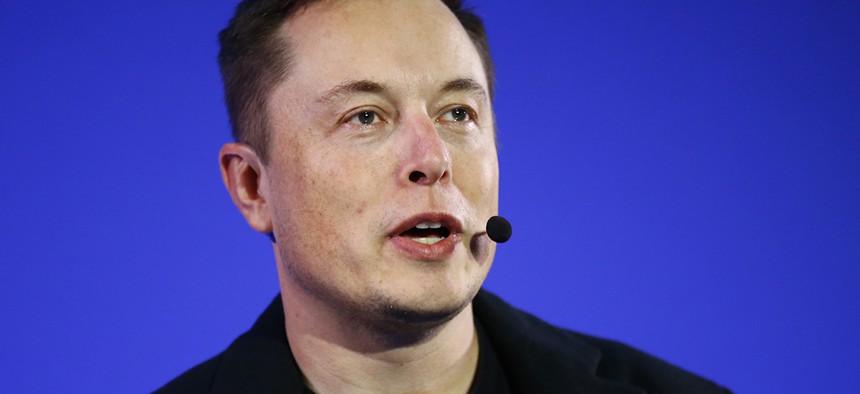Elon Musk’s Master Plan for Tesla Is Self-Driving Cars and Sun-Powered Trucks

Tesla Motors Inc. CEO Elon Musk Francois Mori/AP File Photo
Musk has a four-point plan.
Tesla’s secret master plan was never really a secret. Tesla’s original plan, laid out in a 2006 blog post, was to build an electric sports car, plow profits from its sales into a more affordable car, build an even more affordable one and then deploy infrastructure to power them with carbon-free electricity.
Remarkably, in the last 10 years, Tesla has achieved three of the four goals with the release of the Roadster, Model S, Model X, the spread of its super charger stations and pending acquisition of Solar City. It only needs to build the mass-market Model III vehicle to achieve the last (something some think Tesla will not pull off).
But the bar just got higher. In a post on Wednesday night, Tesla’s CEO Elon Musk outlined what it would take to fulfill the promise he made 10 years ago: build a transportation fleet powered by solar energy to wean humanity off fossil-fuel powered cars.
Musk’s four-point plan is designed to move Tesla from its present, precarious state as a small manufacturer of luxury electric cars to the world’s dominant supplier of clean, autonomous transport and an electricity source for millions of businesses and homes.
Deliver solar power to the masses
The first order of business, he writes, is solar power. Tesla will offer a one-stop shop to make “the individual … their own utility and then scale that throughout the world.”
Musk now has all the pieces he needs to build a distributed solar power network: the Powerwall battery and Gigafactory battery plant, the pending acquisition of solar panel installation and financing firm SolarCity, and a fleet of Tesla vehicles with mobile batteries.
By building a seamless network of rooftop solar panels with home batteries and vehicles, Tesla hopes to eliminate the friction of piecing together expensive providers, hardware and technology that’s kept solar adoption under 1 percent of U.S. homes. All of this will disappear into a single package that costumers can just walk into a Tesla store and order.
Vehicles any home or business can buy
Tesla’s lineup of sedans and SUVs only appeal to a fraction of the automobile market. Musk wants all of it. The company will produce a compact SUV, pickup truck, and the mass-market Model 3 for consumers who something besides an expensive sedan. Commercial vehicles will follow, including buses and a heavy-duty truck, the Tesla Semi. These should be ready for unveiling next year.
Make them all autonomous
Musk plans to transition Tesla’s fleet from the partially autonomous autopilot to fully self-driving vehicles as soon as regulators and technology permits. There is no timeline for this rollout, but Musk said it would be “morally reprehensible to delay release simply for fear of bad press or some mercantile calculation of legal liability.”
The recent death of a driver relying on Tesla’s autopilot mode May 7 has not dimmed his belief that autonomous vehicles are ultimately safer than humans behind the wheel. Tesla cars are logging 3 million miles a day on autopilot, and Musk said he expects global regulatory approval once 6 billion miles have been logged. Tesla’s autopilot mode will come out of beta once it’s approximately 10 times safer than the U.S. vehicle average, he said.
Build a fleet of cars anyone can borrow
The last pillar of Musk’s vision is to build a Tesla car-sharing service that invades Uber’s territory. The master plan, he writes, is for Tesla owners to rent their cars when they’re otherwise idle to help offset the cost of the vehicle so “almost anyone could own a Tesla.”
Most cars are only used less than 10 percent of the day. So, the logic is, the cost of owning self-driving car rented out may be a fraction of the cost of a conventional vehicle.
Tesla’s latest goals seem almost untenably ambitious. But the company’s strategy, Musk writes, has always been informed by the astronomical odds against its success.
In 2016, only two U.S. car companies had not gone bankrupt: Ford and Tesla.
“Starting a car company is idiotic and an electric car company is idiocy squared,” he writes. Now, Tesla is coming under fire from critics for taking excessive risk, poor timing and a dangerous lack of focus. Musk’s new master plan shows how much he had to do to prove them wrong.





